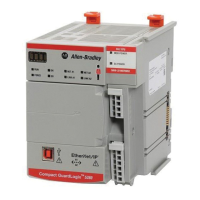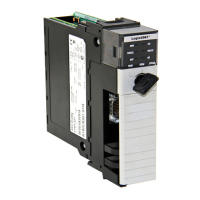1756-6.5.3 - December 1999
ControlNet Communication Basics 1-9
Assume you have set up a system that contains 10 discrete I/O modules in a
remote ControlNet chassis. If you used direct connections to transfer data to
each of the these I/O modules, you would need 11 connections to transfer all
of the data (one connection to the communication module and 1 connection
to each of the ten I/O modules). If you used a rack-optimized connection to
transfer the data, you would only need a single connection – the connection
to the communication module. Since the 1756-CNB module is limited to 64
connections, using rack-optimized connections can save valuable resources.
Important:Although rack optimized connections offer an efficient way to
use resources, there are a few limitations on their use:
• You can only use rack optimized connections to send data
to and from discrete digital I/O modules. Analog I/O
requires direct connections.
• Rack optimized connections can contain I/O data and status
information only. Additional module information, such as
diagnostics, is not available through a rack-optimized
connection.
• You must use a consistent RPI for all data in a single
rack-optimized connection. Since you are using a single
connection to send the data, all of the data will be
transferred in the same message at a uniform rate.
Mixing Communication Formats
When multiple I/O modules exist in the same chassis, the user can mix
Comm Formats for the different I/O modules. I/O modules set up to use
Rack Optimization will communicate at the rate of the RPI configured for
the 1756-CNB module. I/O modules configured for direct communication
will communicate at their set RPI and ignore the CNB RPI.
Important:After the proper I/O configuration is set up in RSLogix5000,
I/O communication on ControlNet is not established until
RSNetWorx for ControlNet software is run. RSNetWorx is used
to set up the network parameters of a ControlNet network.
See Appendix A for more information on connections.

